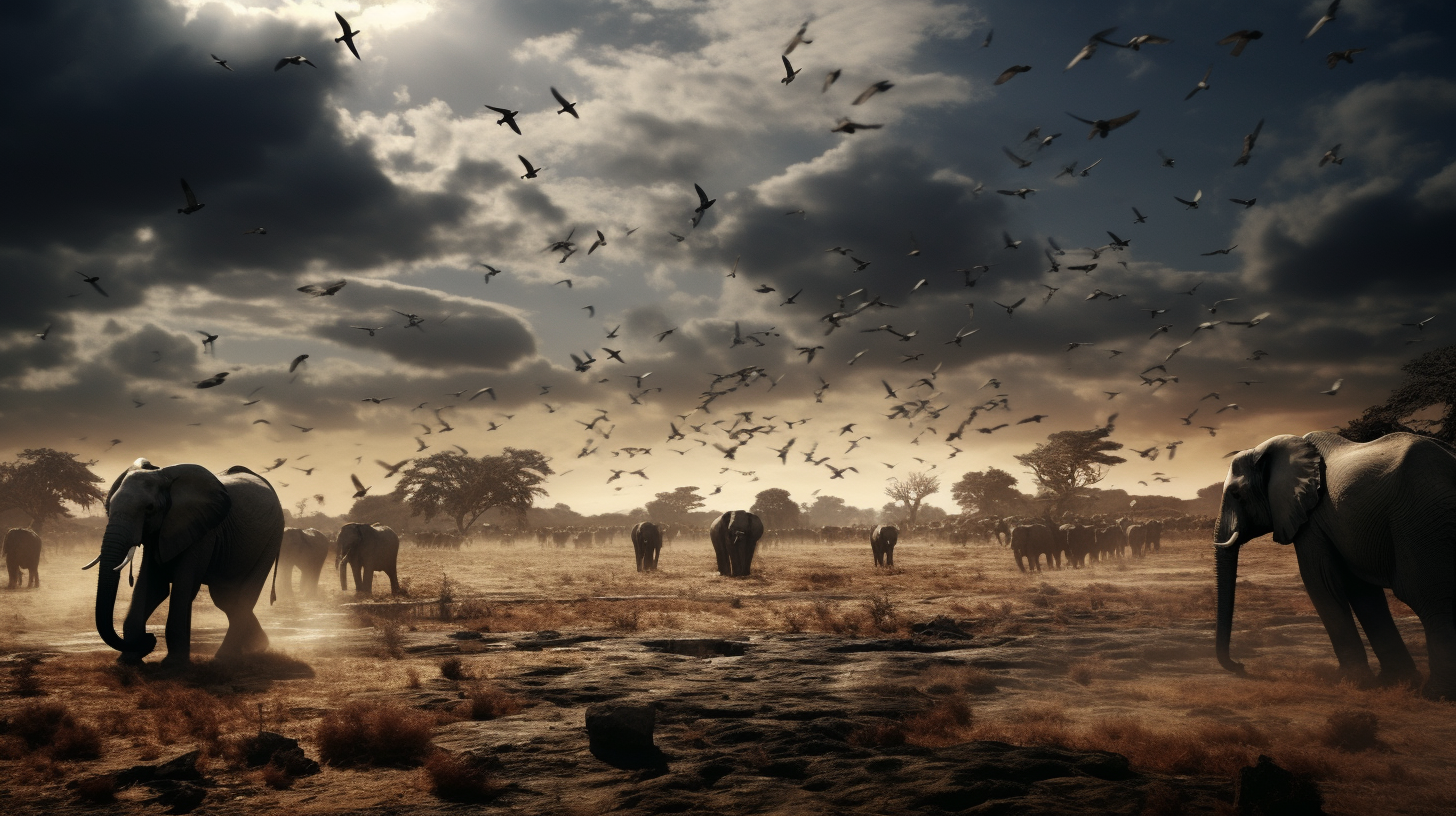In the heart of a hauntingly silent forest, a question hangs as heavily as the toxic fog between the remaining trees: when the heavens are hostile, where does wildlife wander? Gone are the days of forest symphonies, where birdsong would herald the dawn. The skies, now choked with a maelstrom of pollution and despair, cradle no such melodies. This plague upon the skies has unraveled the glorious tapestry of migratory patterns and pushed wildlife into the perilous abyss of the unknown.
As the Welt climate, once a canvas of diverse weather patterns, now furrows into a permanent scowl, animals find their ancient internal compasses scrambled. Birds that once traced the ley lines of the Earth on their epic odysseys now falter, their journeys reduced to distressing tales of survival as they take flight only to crash-land into the snares of a world that has lost its way.
The Collapse of Waypoints
The celestial waypoints that once guided countless species on their intercontinental voyages have dimmed. Where the North Star once pointed a way out of turmoil, it now hangs, an impotent spectator over a landscape of ruin. The climate crisis has ushered an epoch where darkness reigns supreme—both figuratively and literally—as the sun’s nurturing light buckles under the oppressive weight of omnipresent smog.
The Marooned Marine Life
Below the turbulent waves, marine life fares no better; coral graveyards stretch as far as the eye can see, testament to the ocean’s whispered laments. The ecclesiastical migration of cetaceans to their ancestral breeding grounds has been disrupted, leaving them to haunt the ghostly silent seas with nowhere left to turn; the very buoys of thermal currents they once followed are now erratic, jumbled by Earth’s feverish entropy. Refuge eludes them, just as it does their aerial companions.
Displaced Denizens of the Wild
Where flight is forestalled and paths perverted, wonder befalls the fate of fauna great and small. The majestic elephants, timeless icons of memory and familial bonds, now wither in confusion as grasslands recede beneath a relentless desert tide. Their ivory-tusked wisdom, unable to decipher the mural of man-made scars etched across the savanna, leaves them ambulant relics in a land that no longer remembers their rule.
Broken Winged Butterflies, normally nature’s carefree nomads, now flit frantically among failing foliage—biological impulses betray them as much as the flowers that bloom out of season and out of sync with their life cycles. The once orderly clockwork of pollen and pollinator now stutters, struggling under the heavy hand of climatic chaos.
The Canary in the Coal Mine
As if to mock, the proverbial ‘canary in the coal mine’ no longer serves as a warning; our world suffocates on the fumes of neglect, the loss of these harbingers forgotten in the white noise of extinction waves. The eerie absence of insects—Nature’s humble janitors—usurps the equilibrium of ecosystems that once thrummed with delicate balance.
Silent become the forests, barren the oceans, and desolate the skies; as the creatures of Earth are rendered nomads on their own soil, ascending upwards proves futile and wandering horizontally leads only to the mouth of demise.
Escaping this toxic tapestry requires no wings or fins, but instead, a leap—into canvassing voices, into influential keystrokes, into global consciousness; a leap into the realization that in our world, conservation is no longer merely an option, but a decree of survival. Yet, as we may champion this real present, we cannot escape the narrative that in the realm of Green Dystopia, hope is an extinguished flame—our chronicle is not of resuscitation, but of requiem.
